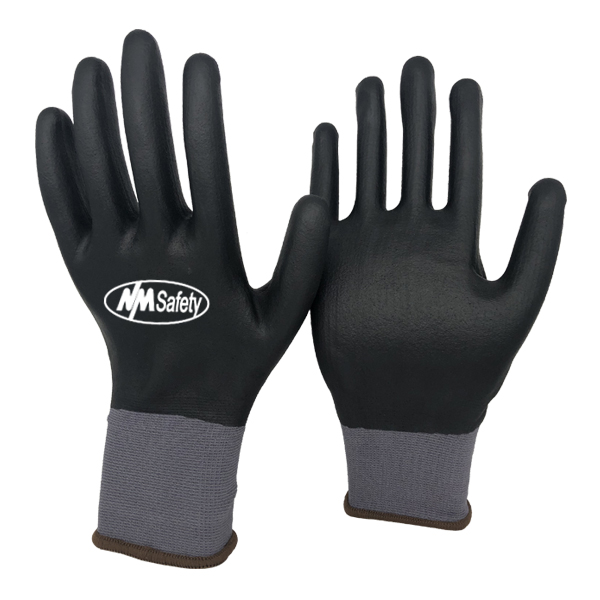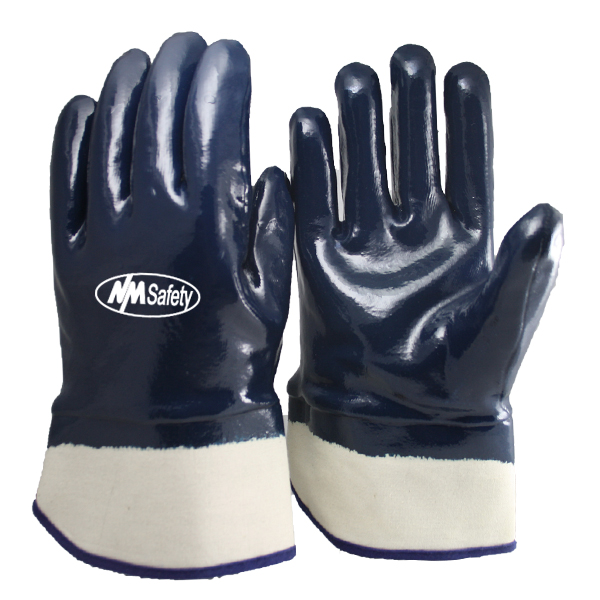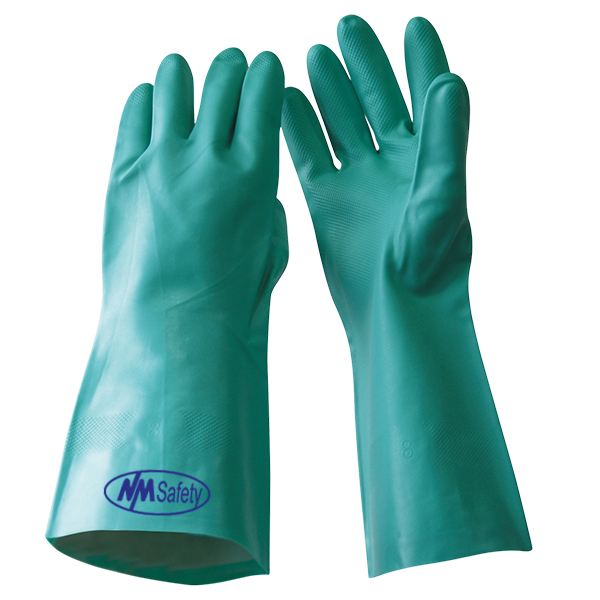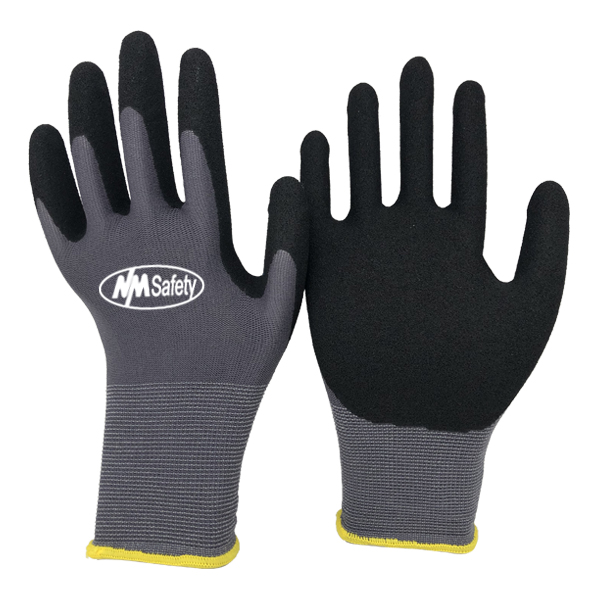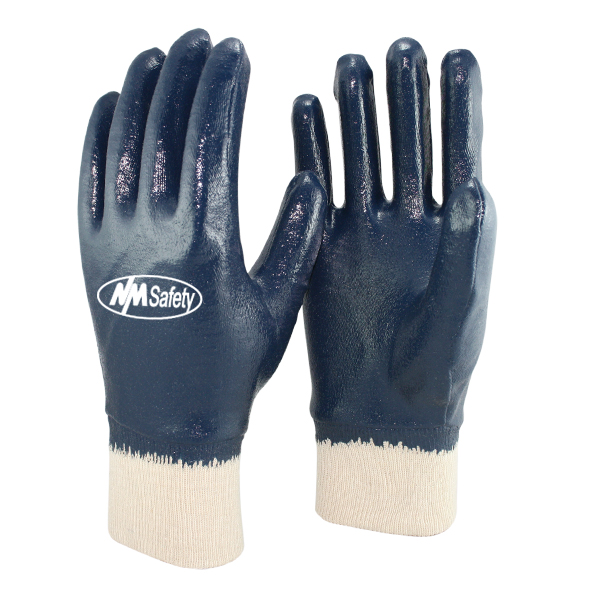When looking for the proper protective gloves for your business and operation, you'll come across glove coatings, ranging from smooth and foam nitrile to PU and latex. But what are the differences between them, and which coating is best for you?
What are foam nitrile full coated gloves?
A foam nitrile covering acts like a sponge. It helps to deal with the greasy material. Foam nitrile-coated gloves are high-quality puncture resistant.
When working with greasy surfaces, a foam nitrile coating functions like a sponge, offering excellent grip in wet and oily circumstances. Foam nitrile also enables the hand to ventilate. When exposed to excessive grease or solvents, the open pore structure of foam nitrile can get saturated. It makes it better suited to dry or mild oil conditions.
Reasons why nitrile-coated gloves are better:
Nitrile gloves are currently widely recognized as the most effective hand protection available. A rubber products polymer is used to make nitrile gloves. Because of its excellent hand security features and the fact that it is latex-free, nitrile has easily surpassed latex as the ideal glove manufacturing substance. However, this does not rule out the use of latex gloves. Latex is still widely used in the production of medical gloves.
It is due to latex's high elasticity and strength. It is less expensive to manufacture than nitrile. Not to talk about the fact that latex is a renewable resource. Keep in mind that vinyl is an up-and-coming glove manufacturing material that provides the most cost-effective hand safety option in the glove market. Regardless, nitrile plays a prominent role in the glove sector, as more people desire this synthetic substance over other organic and inorganic materials used in glove production.
We'll go through eight reasons why nitrile gloves are the finest of the best nowadays.
Great chemical resistance:
Nitrile coated has good tear durability and a wide range of strength and toughness. It provides better sensation, a firm grip, and damage tolerance. When dealing with toxic materials in labs, nitrile gloves are the most frequent choice. It's vital to realize that thinner nitrile rubber offers minimal chemical safety. These gloves should only be used as a protective border over prolonged toxic interaction, and they should be replaced and thrown as soon as they become damaged.
100% latex Free:
The motivation why nitrile-coated gloves are preferred over latex gloves is allergic responses. Synthetic rubber proteins in latex gloves might trigger allergic skin problems in the wearer. Because of the potential for allergic skin responses, many people now choose to use the comparatively harmless nitrile rather than latex. Nitrile is free of latex, making it extremely clean and secure to use. Latex gloves have the significant drawback of causing skin sensitivities and rashes. Latex also provides limited environmental resistance when working with chemical reagents. Latex also makes it hard to notice cuts and bruises or penetration holes.
Completely waterproof:
If you operate in a field where keeping your hands dry is critical, nitrile hand coverings can help because they are fully waterproof. You can use them alone or beneath your regular operating gloves to avoid water penetration. They're perfect for humid workplaces because they hold your hands dry.
Offer more protection:
It's critical to select the correct glove for your requirements. Nitrile is a more durable and high-quality substance than Latex or vinyl. It is the best alternative for several industry experts and home users alike. Nitrile-coated gloves provide excellent protection to all types of workers in every field.
Easy and comfortable fitting:
Many people don't like improperly fitted gloves. They want their gloves to be perfect and comfortable.
Nitrile-coated gloves are relatively comfortable to wear. Nitrile is a low-friction substance, making it particularly simple to put on and take off. When continual change is required, this is a must-have function. What Should Doctors Wear When Using Disposable Gloves? Nitrile-coated gloves play a vital role in medical professions. Furthermore, nitrile gloves are superior to standard disposable hand protection since they do not need the allergy-causing powder for comfort.
Long-Lasting:
Nitrile gloves will survive longer than latex gloves if you need reliable, lengthy disposable safety gloves. Nitrile is a rigid, long-lasting material that's utilized to make top-of-the-line gloves. They have a long shelf life before usage and give the toughness, elasticity, and durability needed to complete tasks while shielding hands from polluted or caustic chemicals for a longer length of time.
Instructions for gloves protection:
There are some instructions that you need to follow for gloves protection.
- Glove thickness is measured in meters, which equals one-tenth of an inch; a glove with a thickness of 10 mils is 0.010 inches in diameter. A thicker measure glove will offer more coverage than a smaller palm of the same materials, but at the price of mobility and touch responsivity. Double-gloving can be utilized to extend a glove's overall breakout time, although this causes feelings of tiredness and burning and is recommended for short-term tasks.
- A glove that is too short for your palm will be overextended. This causes the material to become stressed and less effective. An overly big glove might reduce mobility and make it easier to get hurt. To find the right size, use the company's size template.
- Nitrile-coated gloves are utilized rather than latex gloves in research labs for a variety of reasons, including their improved chemical resistance profile and the avoidance of skin sensitivities produced by latex rubber proteins. Some people, however, may be hypersensitive to the catalysts (chemical additions) found in nitrile.
Conclusion:
Do you need single-use protective gloves for personal or business purposes? If that's the case, foam nitrile full coated gloves and protective gloves are the best options. You can buy these gloves from NM safety. They help you with their best services.





